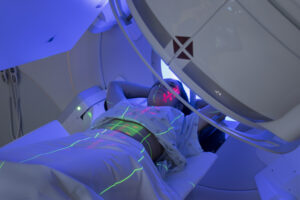Scientists from the Children’s Hospital of Philadelphia (CHOP) report that they have discovered the underlying biology that identifies a subset of patients with acute lymphoblastic leukemia who have a higher risk version of the disease and are more likely to relapse despite treatment.
The findings “A multiomic atlas identifies a treatment-resistant, bone marrow progenitor-like cell population in T cell acute lymphoblastic leukemia,” published in Nature Cancer, allowed researchers to identify new potential therapeutic treatments for patients with this specific form of cancer with a high risk of recurrence.
Building upon a study published in Nature earlier this year, researchers wanted to better understand cellular and genetic factors contributing to treatment resistance and disease relapse. To do this, researchers relied on single cell sequencing of more than 595,000 immature blood cells or blasts to pinpoint why some of them develop into cases of T cell acute lymphoblastic leukemia (T-ALL) that are at a higher risk of relapsing.
“Generally, cancers like leukemia get stuck along a differentiation path, meaning that the blasts do not go on and form normal blood cells,” said co-senior author Kai Tan, PhD, a professor in the department of pediatrics and an investigator in the Center for Childhood Cancer Research at CHOP. “By using this technique and comparing cancerous cells to healthy control donor samples, single cell sequencing helped us identify which cells result in these high-risk cancers.”
In this study, scientists wanted to link tumor subpopulations with clinical outcome, create an atlas of healthy pediatric blood cell development, and apply single-cell multiomic analysis to a diverse cohort of T-ALL cases.
The researchers identified a subpopulation of bone-marrow progenitor-like (BMP-like) T-ALL associated with treatment failure and overall poor survival. Progenitor cells are descendants of stem cells that can further differentiate into different types of cells. While prior bulk analysis missed specific gene signatures of these specific cells, the single cell molecular sequencing found a gene signature on these BMP-like cells that predicted poor outcome across multiple subtypes of T-ALL.

By knowing its gene signature, the team then used in silico and in vitro drug screenings to identify therapies that could potentially target the cells associated with high-risk cancer.
Venetoclax, an FDA-approved drug used to treat other forms of leukemia and lymphoma, appears to effectively target these BMP-like cells. The scientists hope to design a clinical trial that could test the effectiveness of the drug for patients with the gene signature identified in this study, with the hope that it could help patients with relapsed or refractory disease.
“One of the major challenges in treating T-ALL is that we know certain drugs work for some patients who relapse, but these drugs are not effective for all patients who relapse. Identifying the patients who may benefit from new therapies is critical,” said co-senior author David T. Teachey, MD, co-leader of the Immune Dysregulation Frontier Program and an attending physician and researcher at CHOP. “By identifying more gene signatures like what we describe in this study, we will have a much better idea of which therapeutic agents are most likely to help specific subsets of patients, which is the goal of precision medicine.”
This post was originally published on here







